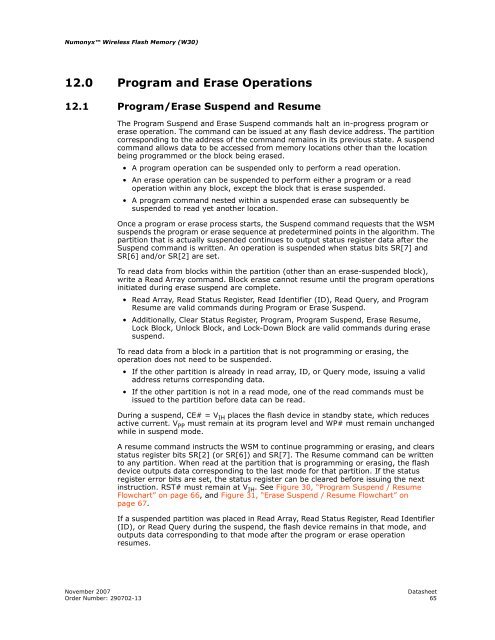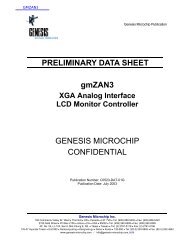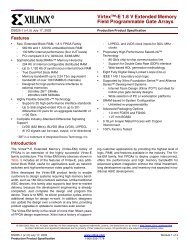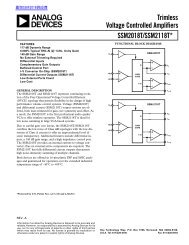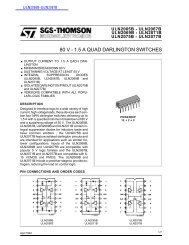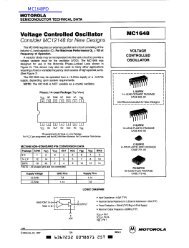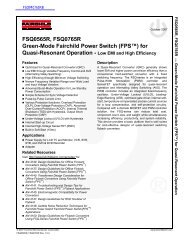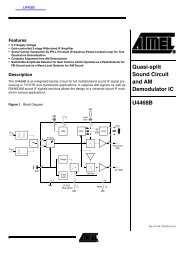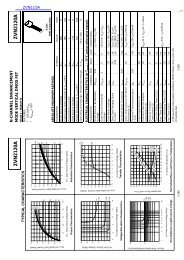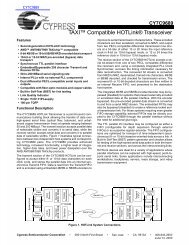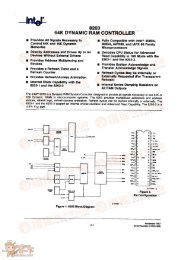Create successful ePaper yourself
Turn your PDF publications into a flip-book with our unique Google optimized e-Paper software.
Numonyx <strong>Wireless</strong> <strong>Flash</strong> <strong>Memory</strong> (<strong>W30</strong>)<br />
12.0 Program and Erase Operations<br />
12.1 Program/Erase Suspend and Resume<br />
The Program Suspend and Erase Suspend commands halt an in-progress program or<br />
erase operation. The command can be issued at any flash device address. The partition<br />
corresponding to the address of the command remains in its previous state. A suspend<br />
command allows data to be accessed from memory locations other than the location<br />
being programmed or the block being erased.<br />
• A program operation can be suspended only to perform a read operation.<br />
• An erase operation can be suspended to perform either a program or a read<br />
operation within any block, except the block that is erase suspended.<br />
• A program command nested within a suspended erase can subsequently be<br />
suspended to read yet another location.<br />
Once a program or erase process starts, the Suspend command requests that the WSM<br />
suspends the program or erase sequence at predetermined points in the algorithm. The<br />
partition that is actually suspended continues to output status register data after the<br />
Suspend command is written. An operation is suspended when status bits SR[7] and<br />
SR[6] and/or SR[2] are set.<br />
To read data from blocks within the partition (other than an erase-suspended block),<br />
write a Read Array command. Block erase cannot resume until the program operations<br />
initiated during erase suspend are complete.<br />
• Read Array, Read Status Register, Read Identifier (ID), Read Query, and Program<br />
Resume are valid commands during Program or Erase Suspend.<br />
• Additionally, Clear Status Register, Program, Program Suspend, Erase Resume,<br />
Lock Block, Unlock Block, and Lock-Down Block are valid commands during erase<br />
suspend.<br />
To read data from a block in a partition that is not programming or erasing, the<br />
operation does not need to be suspended.<br />
• If the other partition is already in read array, ID, or Query mode, issuing a valid<br />
address returns corresponding data.<br />
• If the other partition is not in a read mode, one of the read commands must be<br />
issued to the partition before data can be read.<br />
During a suspend, CE# = V IH places the flash device in standby state, which reduces<br />
active current. V PP must remain at its program level and WP# must remain unchanged<br />
while in suspend mode.<br />
A resume command instructs the WSM to continue programming or erasing, and clears<br />
status register bits SR[2] (or SR[6]) and SR[7]. The Resume command can be written<br />
to any partition. When read at the partition that is programming or erasing, the flash<br />
device outputs data corresponding to the last mode for that partition. If the status<br />
register error bits are set, the status register can be cleared before issuing the next<br />
instruction. RST# must remain at V IH . See Figure 30, “Program Suspend / Resume<br />
Flowchart” on page 66, and Figure 31, “Erase Suspend / Resume Flowchart” on<br />
page 67.<br />
If a suspended partition was placed in Read Array, Read Status Register, Read Identifier<br />
(ID), or Read Query during the suspend, the flash device remains in that mode, and<br />
outputs data corresponding to that mode after the program or erase operation<br />
resumes.<br />
November 2007 Datasheet<br />
Order Number: 290702-13 65


